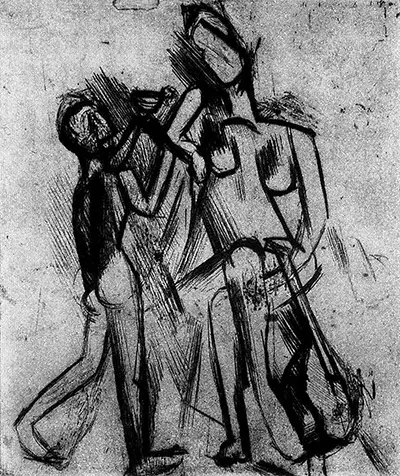The figure on the left is a seated female who is facing forward. Her hand is resting on her head. Beside her is a guitar that is resting on the ground. The original image was painted in Paris, France with a pencilled signature on the bottom right. This was Picasso's first sketching since 1906. The drypoint was printed by Eugene Delatre and published by Daniel-Henry Kahnweiler in 1912. Picasso was unique at the time, in that he first started sketching figures of women that were fully clothed. As his artwork progressed, he switched to sketching naked figures. This was the opposite of most classical drawing techniques at the time, where artists usually started with nude sketches.
Picasso was the son of an artist, born in Malaga, Spain. He visited France in 1900, before settling there in 1904. He was a hugely influential artist who worked on numerous styles throughout his life. He spent a period of several months during the summer of 1909 producing an extensive series of standing and seated nudes sketches. His companion at the time - Fernande Olivier - inspired his work on the female form. It was around this time that he no longer needed a live model to sketch. Instead, the female figure became a means of experimenting with form.
In the autumn of 1909, Picasso sketched a similar portrait of a female seated nude in a similar style to the Two Naked Figures sketching. After this, from 1910 onwards he branched into cubism, resulting in more abstract images. The 1906 image of 'Two Women of Gosul' was sketched in a similar style as the Two Naked Figures. Although the image was less abstract with softer lines.


